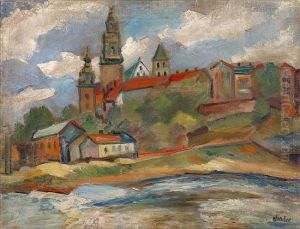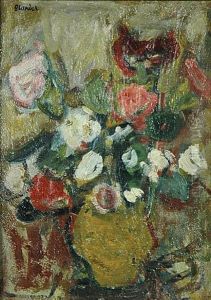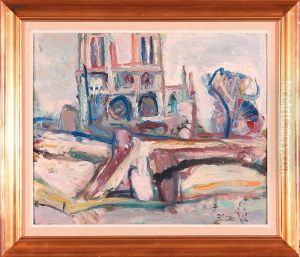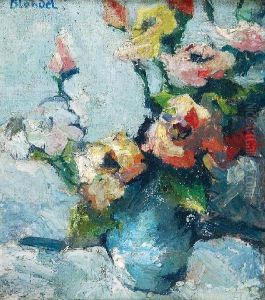Sasza Blonder Paintings
Sasza Blonder, also known as André Blondel, was a Polish-Jewish painter born on January 15, 1909, in Kraków, Poland. He was part of the interwar avant-garde art scene in Poland and later in France. Blonder is often associated with the School of Paris, a term referring to the group of foreign artists living and working in Paris during the first half of the 20th century.
Blonder's early life was marked by a traditional Jewish upbringing, and he began his artistic education at the School of Fine Arts in Kraków. His talent was evident early on, and he became actively involved in the artistic community. In the 1930s, he moved to Paris, which was then a hub for artists, intellectuals, and emigrants, especially those fleeing political unrest in their home countries. Here, Blonder's style evolved as he was exposed to a range of artistic movements, including Cubism, Expressionism, and Surrealism.
During his time in Paris, Blonder became part of a circle of artists who were experimenting with new forms and ideas. He engaged with members of the artistic avant-garde, such as the poet and writer Tristan Tzara, who was one of the founders of the Dada movement. Blonder's work from this period is characterized by a bold use of color, dynamic compositions, and a tendency towards abstraction, yet often with a figurative element.
The outbreak of World War II and the subsequent Nazi occupation of France dramatically affected Blonder's life and career. As a Jewish artist, Blonder faced persecution and had to go into hiding. These experiences deeply influenced his work, which took on darker and more somber tones, reflecting the turmoil and suffering of the war years.
After the war, Blonder returned to painting, but his life and career were cut short when he died at the age of 40 on September 4, 1949, in Paris, France. Despite the brevity of his career, Blonder left behind a body of work that continues to be studied and appreciated for its contribution to modern art. His paintings are held in private collections and museums around the world, and he is remembered as a significant figure in the School of Paris and in the broader narrative of 20th-century European art.




